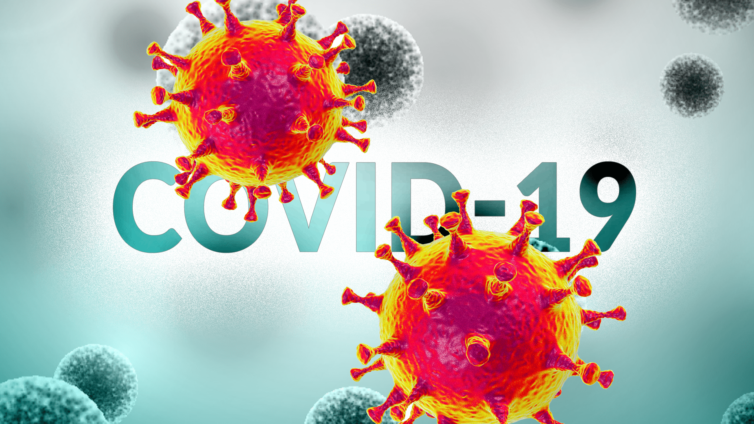Ghana has had its share of the impact of the Covid-19 since it recorded its first two cases in March 2020. Following that, the government has recommended several measures: social distancing, personal hygiene, coughing and sneezing etiquettes etc. Restricted movement, termed ‘lockdown’, within Greater Accra and Kumasi were also enforced.
This article explores how the livestock industry was affected and the ripple effect on animal protein accessibility: with focus on two major industry players.
Paga animal entry point, bordering Burkina Faso is an active checkpoint with an influx of livestock into the country. A total of 3579 cattle, 1985 sheep and 3978 goats were imported three weeks before the lockdown but were reduced to 1525 (57.4%), 780 (60.7%) and 1423 (64.2%) respectively during the three weeks lockdown period.
The Kumasi Abattoir, dedicated for slaughter and trade of meat, recorded an average slaughter of 725 cattle and 533 for sheep and goats respectively three weeks before lockdown but this was reduced to 308 (57.5%) for cattle and 236 (23.4%) for sheep and goats respectively.
These figures represent the negative impact on some major industry players and undoubtedly, these effects were witnessed along the livestock value chain, including livestock cargoes, butchers and “chop bar” operators. Consequently, meat prices were also affected. On average, beef increased from GHc12.00 to GHc16.00 (33.3%) and chevon and mutton from GHc14.00 to GHc16.00 (14.3%). Obviously, animal protein availability was less and at the same time more expensive.
Impact on health and safety at the abattoir
Being an essential commodity, those in the food value chain worked within the lockdown period whilst observing safety measures. At the abattoir, temperature was taken before entry was permitted into the facility and hand washing was facilitated, although only at the main entrance. Outside the facility, adherence to safety measures was absent.
Though no substantial evidence has indicated COVID-19 being transmitted from meat to humans, non-adherence to strict public health protocols announced by the government leaves workers and buyers at risk of a possible horizontal transmission in the presence of an asymptomatic carrier. The continuous disregard to safety measures post lockdown and cases still on the ascendency is a looming disaster in the livestock industry.
The way foward
The current pandemic has revealed the nation’s lack of investment and prioritization in the livestock sector towards self-sufficiency. Reviving animal production and health include making available stable farms across the nation to reduce dependency on neighboring countries.
Government must start implementing the proposals for developing the livestock industry under the “Rearing for Food and Jobs” suggested to them by the veterinary services and allied departments. In doing so, the government through these agencies can quickly prevent disease outbreaks and bad performance whilst ensuring greater sustained productivity. This will enable animal protein availability and at affordable prices.
COVID-19 has presented an opportunity for renewal of “operation feed yourself”. Several homes have sufficient spaces to start small gardens and animal farms, enough to sustain the family. Animals worth considering include sheep, goats, rabbits, grasscutters and poultry. For example, a simple wooden shed with solid ground of dimensions 1.8m (l) x 1.8m (w) x 2.5 m (h) is suitable for ten small-sized sheep and goats. Rabbitry of average unit space 3 x 1.2m will suffice for about nine animals. Grasscutters, requiring more space, will require 1.6-2m² for five animals; one male to four females. For poultry, an average of 1m² per bird is enough. Aside from poultry, these animals mostly feed on common grasses such as elephant grass. One could supplement with commercially prepared feed, rice, wheat bran and plant residues.
Engaging supermarkets and entrepreneurs on making these livestock available on shelves and providing digital platforms for such trades will further increase accessibility to animal products. In rural areas where this technology is not readily available, an alternate method, where already existing markets can have a central contact station or person, with several couriers who can deliver the products to the respective clients. Thus, allowing businesses to run whilst reducing numbers at the various market stations and creating more job opportunities for the young ones.
***
The authors are: Drs William Tasiame, Yesutor Soku, Ekua Esuon Thompson, Benjamin Kissi Sasu, Ewurabena Ntiamoah Bediako, Kingsley Emmanuel Bentum, Ernest Boateng, Oliver Boakye and Obed Yeboah
Latest Stories
-
Election 2024: Bawumia is a timely asset for NPP and Ghana – Freddie Blay
6 mins -
Livestream: Newsfile discusses Ghana’s 2025 AFCON fiasco, Dumsor scare
14 mins -
Police invite Wontumi FM/TV presenter over publication of false news
16 mins -
Putin says Russia will use new missile again in ‘combat conditions’
3 hours -
We have rescued kidnapped Emirates Airlines Airport Services Manager – Police
3 hours -
Bawumia-branded campaign vehicle burns, occupants escape unscathed
3 hours -
Bawumia, thousands observe ‘Jummah’ prayers as new Walewale Central Mosque is commissioned
4 hours -
Peasant farmers hail Bawumia as Walewale Watermelon Factory is commissioned
4 hours -
Joy FM Prayer Summit for Peace ends in electrifying worship and prayer
11 hours -
The Conscience of Leadership: A call to President Akufo-Addo on Ghana’s environmental devastation
12 hours -
Ghanaian youth unaware of their right to hold politicians accountable – Youth Bridge Foundation
13 hours -
Judge delays Trump sentencing for a third time
13 hours -
2024 WAFCON: Ghana drawn against defending champions South Africa in Group C
14 hours -
Photos from DW-JoyNews street debate on ‘galamsey’
14 hours -
Mimmy Yeboah: Blending heritage with global sophistication, confidence redefined through couture
15 hours

